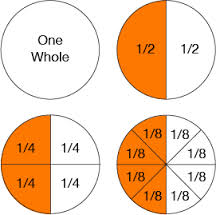When we multiply a fraction's numerator and denominator by the same number, why is the fraction still the same value?
2 Answers
See below:
Explanation:
Idea 1 - What happens if I multiply anything by the number 1?
- I get the same number:
So I can multiply any number by 1 and get the same value and anything multiplied by 1 is simply that value.
- The same thing works when I divide by 1 - I get the same number.
For instance, I can say that:
So I can divide anything by 1 and get the same value and anything divided by 1 is simply that value.
~~~~~
Idea 2 - If I take any number and divide it by itself, I get 1
- Let's talk a second about the number 1:
and I can write it the other way too:
and so I can write something like:
~~~~~~
Idea 3 - How we multiply fractions
We need one more idea and then we'll be ready to make equivalent fractions.
- How do we multiply fractions?
When I multiply
~~~~~
Putting it all together
To make an equivalent fraction, we want to take a fraction (let's say
So what have I done? Let's describe both
With
With
Notice I have the same amount of pizza, it's just in the first example it was one big slice and in the second example I have 4 smaller slices.
Here's an image to showcase what we've just done with math above:

Please see below.
Explanation:
A fraction, say
For example, in the figure below, shows a full bar divided into

Let us consider a simple example, say

What if we had divided the object in

Although it is
What if we had divided the same in

Hence one can say that
Similarly dividing by

It is quite obvious that
Also observe that in this case we are just multiplying numerator and denominator same number (in above case
Now without actually drawing these figures consider
Because
Hence multiplying or dividing both numerator and denominator, make an equivalent fraction.

